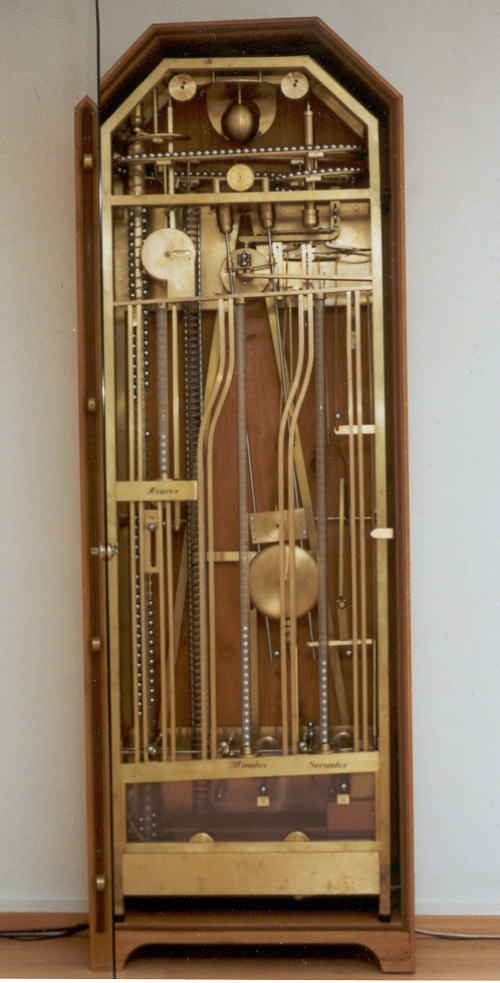
Marcel writes –
In November 1997, I though about building a clock with a pendulum activated by the fall of bearing balls. The first thing to design was the engine which was to sustain the pendulum’s oscillation: how to get enough energy from a ball to make this possible? The balls had to be heavy enough to run a stable course but their size obviously determines the clock’s size. As a trade-off between weight and size I arbitrarily picked a 19.8 millimetre diameter for the balls. I could picture the running clock in my mind, and I believed I could complete it in three months…
The engine’s first prototypes were just unbelievable, at that time I thought that I needed as much gain as possible to achieve the largest possible amplitude: after a month of effort I had achieved a 60 centimetre swing with a 1 meter pendulum. That’s when I stumbled across an old physics book from 1894 which explained that the isochronism of oscillations is only true for small amplitudes, not large ones. A month of work for nothing. I was now left with the reverse problem to solve: achieving the smallest possible amplitude with 20-millimetre balls. It took me another month to design the final version of the engine.
Malevoz (rolling balls clock) – [via] Link.
Related:
MARCEL BETRISEY. Création de pièces d’art montrant le temps qui passe – Link.
ADVERTISEMENT
Join Make: Community Today









